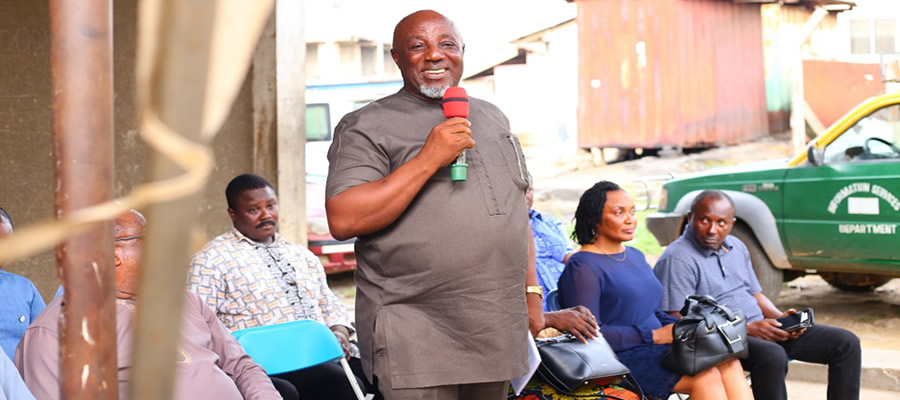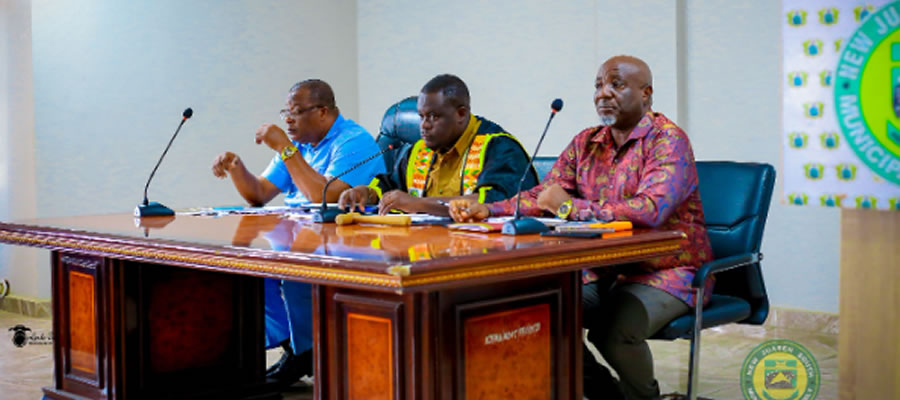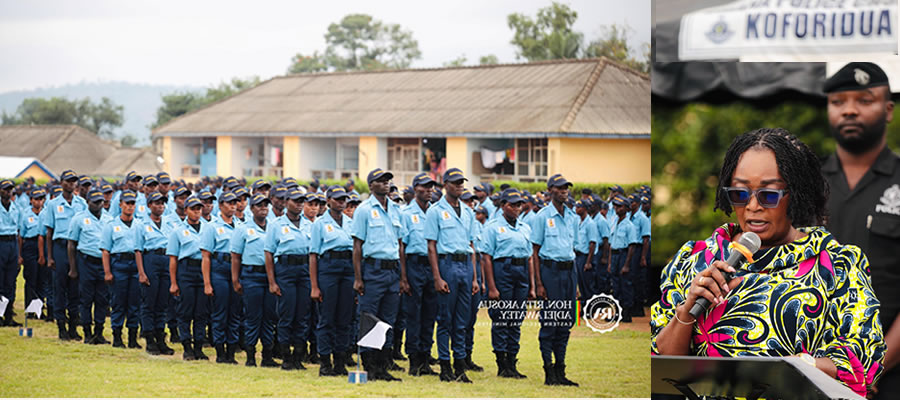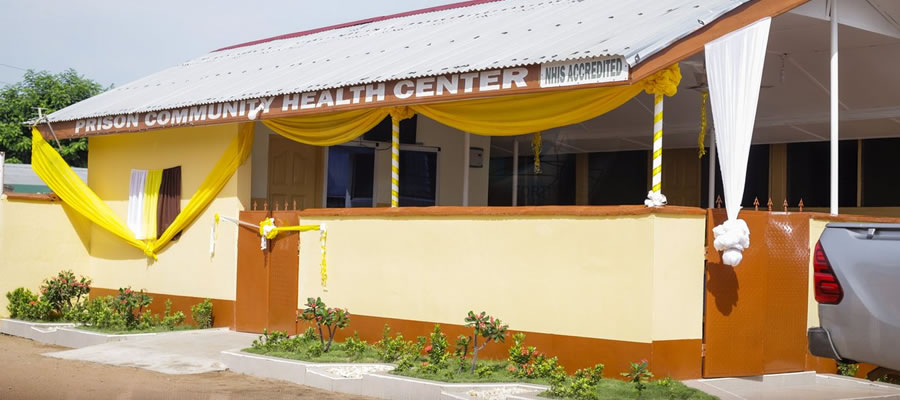

Education The New Juaben South Metropolitan education directorate area has been divided into seven (7) circuits, namely, Nsukwao, Ada, Oguaa, Adweso, Nyerede, Betom and Srodai. Table 1.4 shows the number of educational facilities for both public and private schools.
Table 1.4: Education Facilities
SOURCE: NJSMA, MPCU, 2021
Figure 1.7: Educational Facilities Map of New Juaben South Metropolitan
ENROLMENT
Net Enrolment Rate (NER)
The Metropolis recorded an increase and decrease in Net Enrolment Rate (NER) over the period a little below 100% target for KG and primary, this means that parents enrolled their wards at the right school going age for these levels, on the other hand JHS recorded a little above 60% for 2018 and 2019 and below 50% for 2020 and 2021 this implies most students were not enrolled at the right age at this level. Table 1.5 shows the trend of NER.
Table 1.5: NER, 2018-2021
Source: NJSMA, MPCU 2021
Figure1.8: Trend of NER, 2018-2021
GENDER PARITY INDEX (GPI)
The Metropolis recorded a Gender Parity Index (GPI) of 0.98, 1.02, 1.04 and 0.83 for KG, Primary and JHS respectively, Primary and JHS recorded GPI above the target of 1, due to more girls being enrolled compared to KG recording more boys than girls. Figure 1.9 shows the trend of GPI for the period 2018 to 2021.
Table 1.6: Gender Parity Index (GPI)
Figure 1.9: Trend of GPI, 2018-2021
GROSS ENROLMENT
Gross enrolment for basic and second cycle schools in both public and private has declined since 2017 as shown in Table 1.7. Comparatively enrolment is higher at the private schools at the kindergarten (KG) level as compared to the public KGs. This could be due to the poor infrastructure at the KGs in public schools as compared to the private schools.
However, at the Primary, Junior High Schools (JHSs) and Senior High Schools (SHSs) the public schools had a higher enrolment than the private schools. The Free SHS could have contributed to the increment in a much higher enrolment at the public SHS.
Table 1.7: Enrolment for Public and Private Schools
SOURCE: NJSMA, MPCU, 2021
Completion Rate
The completion rates for Kindergarten (KG) increased over the period from 2018 to 2021. Primary, JHS and SHS completion rate on the other hand fluctuated, with an initial rise from 2018 to 2019 and a decline between 2020 and 2021. As shown in figure 1.10 below.
Table 1.8: Completion Rate
Figure 1.10: Completion Rate
Basic Education Certificate Examination (BECE) Performance
A comparative analysis of the BECE performance of 2018 and 2019 showed an increase of 1.0% in the number of candidates who got between aggregates (06-36). The overall performance of candidates presented increased marginally from 83% in 2018 to 84% in 2019. The overall performance in 2020 however dropped from 84% achieved in 2019 to 73%. This represents a decline of 11% in the overall performance.
There is therefore the need for collaborative efforts by all stakeholders to come out with new strategies and introduce innovative skills to improve the performance, especially in the core subjects. Conduct of mock exams, inspection and supervision would be intensified. Table 1.9 shows a summary of BECE results between 2018-2020.
Table 1.9: BECE results
SOURCE: NJSMA, MPCU, 2021
Date Created : 9/15/2025 3:48:12 PM













 facebook
facebook
 twitter
twitter
 Youtube
Youtube
 +233 593 831 280
+233 593 831 280 0800 430 430
0800 430 430 GPS: GE-231-4383
GPS: GE-231-4383 info@ghanadistricts.com
info@ghanadistricts.com Box GP1044, Accra, Ghana
Box GP1044, Accra, Ghana